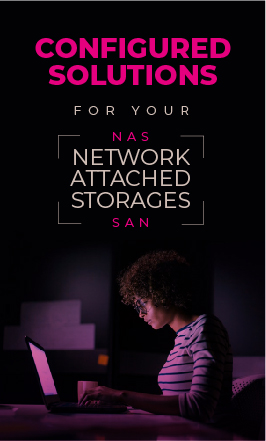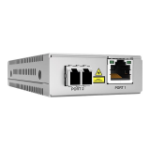Overview
The Allied Telesis MMC Series of mini media converters leverages its smaller size to not only help the environment with a small carbon footprint, but also to save space in its working environment. Despite its compact size, the MMC Series delivers all the power and functionality of standard size media converters.
Extend Networks
The MMC Series are available in 100Mbps or 1000Mbps models. Depending on the model chosen, the fiber-optic port has options for fixed SC, ST, LC or SFP connectors capable of multi-mode or single-mode fiber connectivity. The twisted-pair copper port has an RJ-45 connector supporting either 100Mbps or 1000Mbps, with a maximum operating distance of 100 meters (328 feet).
VLAN Support
Many new backbone switch products now support the industry-standard IEEE 802.1Q specification for Virtual LANs (VLANs) that send extra-long data packets on the network. The MMC Series are fully compatible with these long packets, enabling them to be used in modern networks. Media converters not supporting this feature discard these extra long packets, making them unsuitable for modern networks.
Small and Flexible
The smaller size and external power supply of the MMC Series allows them to be used almost anywhere.
Smart MissingLink (SML)
The Smart MissingLink™ (SML) feature monitors network connections and provides notification when network segments fail, allowing network managers to quickly identify the source and location of failed segments and minimize downtime.
Smart Link Restoration
Smart Link restoration allows the devices, in cases of power failure, link loss or other interrupted service, to automatically restore the link without the need to restart/reset them.
Power Saving
The MMC Series continues the Allied Telesis commitment to the environment with over 50% power savings. With just 1.7W of power usage, the MMC Series media converters are some of the most efficient in the market today.
Link Test
The link test is a fast and easy way for you to test the connections between the media converter ports and the connected end nodes. If a network problem occurs, you can perform a link test to determine which port is experiencing a problem, and focus your troubleshooting efforts on the right cable or end node.















